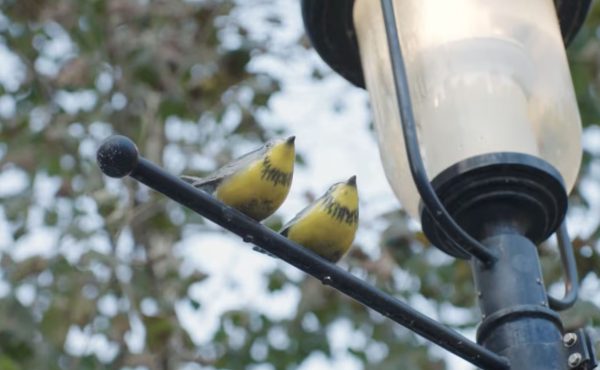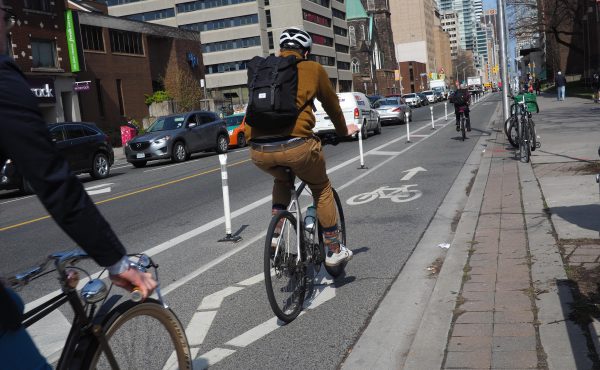
Every Tuesday, Todd Irvine of LEAF posts a stop from the Toronto Tree Tours, a collaborative project of LEAF and the Toronto Public Space Committee. The Toronto Tree Tours offers walking tours in neighbourhoods across the city as well as virtual tours on its web site. The aim is to introduce Torontonians to the individual trees in their neighbourhood while telling stories of our city’s ecological and cultural history.
– – – – – – – – – – – – – – – – – – – – – – – – – – – – – – – – – – – – –
The Tree Tours are not all trees. This week’s stop is a profile of a creative beautification initiative.
Trinity Bellwoods and neighbourhood: Stop 13
Graffiti elicits mixed responses; some view it as an inconsiderate act of vandalism, while others see it as a grassroots art form that brings much needed colour and vibrancy to our city. Regardless of which side of this debate people are on, most would agree that the playfully painted flowers of purple, pink, and white that adorn the Bell phone box in front of 39 Halton Street are a welcome addition to the neighbourhood.
The artwork is by a graffiti artist who goes by the street name Horus and was one of the first on the graffiti scene in the early 1990s. This beautiful mural was not illegally scrawled in the dark of night, but rather commissioned and paid for by Bell Canada, the owner of the box. The project was a joint initiative of the City of Toronto and Bell Canada and was spearheaded by Jason Laslo, an employee in the local Councillor’s office.
Since the boxes would likely end up covered in tags (signed names usually written in marker), the idea was to stop bad graffiti by doing good graffiti first. The partners contacted Style In Progress, a Toronto based graffiti artist collective. A total of fifteen artists agreed to take part in the project and together painted 60 phone boxes, getting paid for each box they completed. The project brought together people on opposite ends of a problem to find a solution that benefited everyone and beautified the city in the process.
Read more stories from the Trinity Bellwoods tree tour . . .
Photograph by Liz Forsberg




7 comments
How do you know that “most would agree that the playfully painted flowers […] are a welcome addition…” ?
Most do-gooder graffiti is as crappy as the stuff it is supposed to displace.
Amil> I think if polled, most citizens would agree that this would be a welcome addition to their neighbourhood. But you’ve got me, I don’t know for sure.
the flowers, while hippy-ish, are much better than the scrawled graf tags. Its not a selfish act, but one that gives back. Tags are just part of stupid pissing contest by teenagers and, on the odd occasion, gangs.
This project around Pantelone’s and Perks’ wards are great examples of upsurping stupid acts with something more meaningful. Don’t get me wrong, I love the Re-Surface events and the mruals/throw-ups in Rush Lane behind Queen St stores, but tags represent the low end of the graffiti food chain.
Perhaps LEAF should chop down those trees at the South West corner of Queen and Shaw on their graphic, seeing that they don’t give a crap about ’em.
If you are going to make wide sweeping claioms like that, back it up.
people should check out the anti graffiti artwork on the side of caffe brasiliano on dundas street.It was a local artist project partially funded by government and the owner Ken Conners.Really does make an impact on the area and discourages tagging.
Those murals are not graffiti, and to be honest with you it’s bubble gum production. I am sure that there are graffiti artist who can produce a much more creative mural that can be appreciated by community, authorities, and the city. To say that those murals discourage tagging, that is a fictional thought.